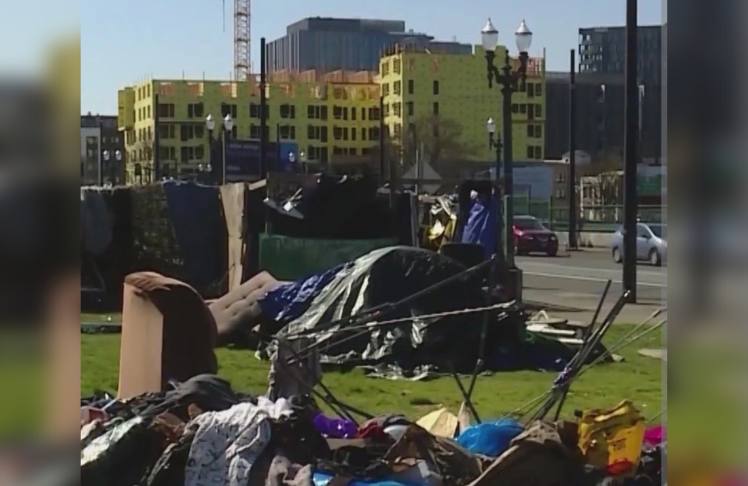
Portland is still developing ways to address the homeless crisis. Impact Reduction Program will launch a new map any day now showing where encampments are reported and encampments are removed. There are thousands of reports in just the last month, and hundreds of encampment cleanups as well.
This is building on what was already in place. The program used to just list the number of reports and the number of clean-ups conducted each week. Now, a map shows every step, from the initial report to the assessment, plus when a camp is cited for cleanup and when, as well as why, a camp is removed.
The Homelessness and Urban Camping Impact Reduction Program (HUCIRP) is responsible for coordinating cleanup/abatement of unsanctioned campsites on City and ODOT (Oregon Department of Transportation) owned properties/rights-of-way within the City of Portland while managing the City’s One Point of Contact campsite reporting system; a system designed to streamline services aimed at improving public health and safety.
The Program provides garbage removal, hygiene access, resource referral and job opportunities, and removes campsites that pose the highest risk to health and safety.
Work teams help clean trash and debris at campsites, as much as 800,000 pounds per month. When concerns are reported, a team is dispatched to clean up trash, provide resources, and assess health and safety. The highest-risk sites are scheduled for removal, and personal property is safely stored. The City posts a legal notice to inform people their campsite will be removed in 72 hours to 10 days.
Property us not just thrown away. It is collected from campsites will be stored by a City contractor for at least 30 days. Property left for longer than 30 days will be destroyed or donated. There is no fee, fine, ticket or citation for retrieving personal property and that the City does not perform warrant checks or ICE referrals in connection with the retrieval of personal property.
The work team engages with people at the site, offers resources, picks up garbage identified by campers and conducts an assessment based on established criteria:
-Conspicuous drug use or paraphernalia
-Impact on neighborhood livability
-Proximity to school, park with playground or private residence
-Environmental impact
-Restricts access by Americans with -Disabilities Act standards
-Posted no-trespassing
-Size of camp
-Reported violence or crime
-Blocking public access
-Restricts maintenance
The HUCIRP data goes back to July 2022, showing when and where a campsite has been reported, the assessment from the city’s impact reduction team, if an encampment has been cited for removal and if it’s been cleaned up. Only camps deemed high risk are removed, scored for the size, blocking public or ADA access, the presence of drug paraphernalia or crime, and impacting the environment and livability.
The Impact Reduction Program is a complaint driven system; the team learns about campsites and trash via public input. First responders to campsites were formerly homeless themselves, drawing on lived experience when they engage with people at the site. About 75 percent of people employed by the City contractor that conducts site removals also have lived experience.
This all is not easy. Officials say they’re balancing safety and campers’ rights. The city doesn’t clear sites that have less than eight tents and are clean, with no conspicuous drug use. When the city clears campsites, staff offer people free transportation to nearby shelters. City officials said they know that clearing campsites is only a temporary solution, and they firmly maintain the position that homelessness is not a crime, but their goal is to minimize urban camping’s impact on the community.














